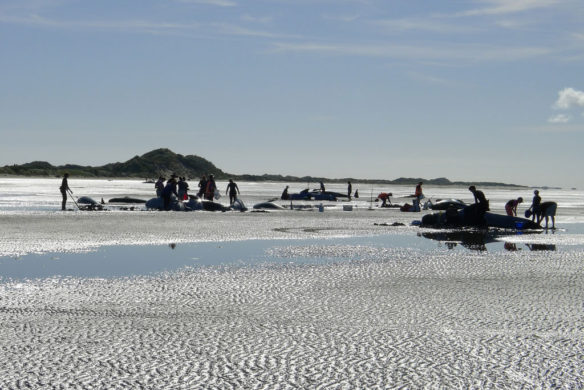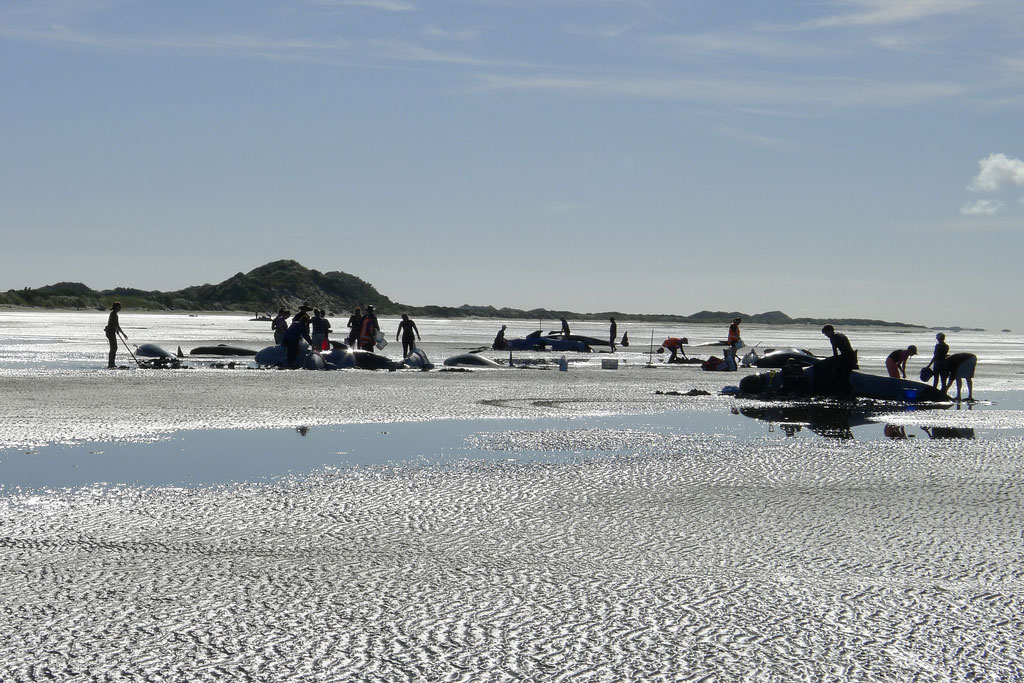
Beached pilot whales, Farewell Spit, New Zealand. Photo source: ©© Angieandsteeve
“Of all cetaceans – whales and dolphins – pilot whales are the species most likely to strand themselves. Their name itself, pilot whale, comes from their propensity to follow a single leader…” Captions: Philip Hoare, author of Leviathan or, The Whale
Excerpts;
Each year locals from Golden Bay at the top of New Zealand’s South Island know to expect a whale beaching at a narrow strip of sand curving into the Cook Strait, known as Farewell Spit…
Read Full Article, BBC News (02-13-2017)
650 whales stranded on New Zealand coast, USA Today (02-11-2017)
Mass Stranding: Hundreds of Pilot Whales Beach Themselves Again; LiveScience (02-11-2017)
NASA scientists have launched a study of a more far-out idea: that solar storms mess with the internal compasses of whales and dolphins, leading to stranding events. Experts at Massey University are expected to undertake animal autopsies, or necropsies, of some of the pilot whales today, according to the DOC.
Mass Strandings of Pilot Whales: A Study, Science Daily (03-14-2013)
Biologists since Aristotle have puzzled over the reasons for mass strandings of whales and dolphins, in which groups of up to several hundred individuals drive themselves up onto a beach…
Are humans to blame for mass whale strandings? by Philip Hoare, Guardian UK (05-201-2011)









